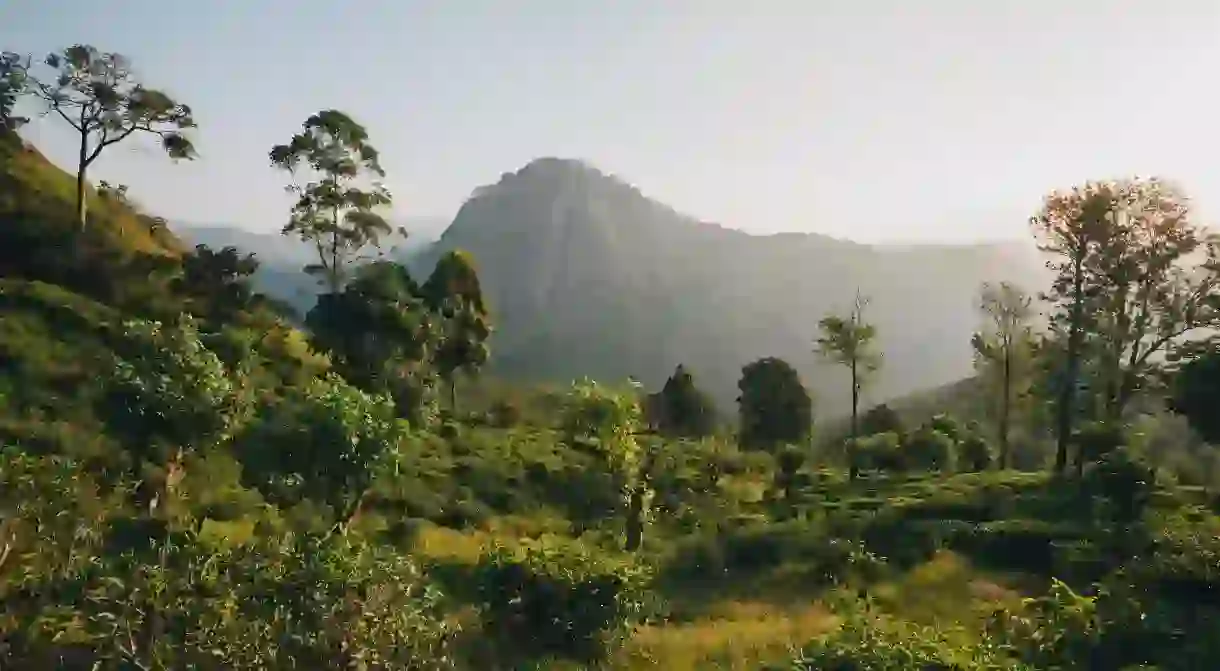Stay Curious: Experience Sri Lanka From Your Living Room

As staying in becomes the new normal, Culture Trip invites you to indulge in a spot of cloud tourism. Transport yourself virtually to Sri Lanka, and experience the country’s famously flavoursome cuisine and complex history, without even leaving your home.
With its coastline fringed with white-sand beaches, enviable surf, national parks teeming with wildlife and varied landscapes perfect for hiking, it’s fair to say that much of Sri Lanka’s irresistible attraction comes from its outdoor experiences. But while it might not be feasible to hop into a jeep for a once-in-a-lifetime close-up encounter with a Sri Lankan elephant at the moment, it is still possible to experience aspects of the country’s culture wherever you are around the world. So make an arrack cocktail, rustle up some sambol (chili paste) and bring the tastes and sights of Sri Lanka to the comfort of your own living room.
Drink: An arrack cocktail
Visit Sri Lanka and you’ll spot rows of the potent coconut spirit, arrack, in wine stores across the country. Luckily, Ceylon Arrack is widely exported across the globe, so you should be able to source some back home (if not, try bourbon or rum). A shot of the spirit will have the hairs on the back of your neck standing on end, so try an arrack cocktail for a subtler introduction to the drink. The centuries-old aliya cocktail (elephant in Sinhalese) is a good place to start: mix arrack with coconut water, or freeze your coconut water into ice cubes to pour the spirit over and serve with a slice of lime. For those that can’t get hold of coconut water, substitute ginger ale.
Alternatively, for a non-alcoholic, typically Sri Lankan drink option, brew a mug of Ceylon tea (Twinings sells a box) taking it strong, with milk and sugar.

Food: Make ‘sambol’ to go alongside rice and curry
While it might not be possible to dine at a Sri Lankan restaurant at the moment, in many ways cooking a meal in your own kitchen is a more authentic experience, as Sri Lankans tend to eat at home. So gather your family around the table and try recreating the national dish, rice and curry. What might sound simple is actually a complex mix of individual vegetable or meat dishes, served with rice. Choose just a few vegetables to make things less complicated – consider okra, beetroot or green beans – and combine with coconut and spices such as chillies, curry leaves, coriander, mustard seeds and fenugreek seeds. There are plenty of recipes online – try this beetroot curry.
The ultimate side dish, the freshness of which is the perfect accompaniment to Sri Lankan curries, is sambol, a combination of grated coconut (fresh if you can find it), chili, onion and lime juice.

Book: ‘Elephant Complex’ (2015)
Colonised by Portugal, the Netherlands and Great Britain successively, Sri Lanka has also witnessed many civil wars, making its history long, complicated and sometimes brutal. For a great insight into its troubled past, read John Gimlette’s Elephant Complex (2015). As he travels across Sri Lanka, Gimlette discusses the history of each location he visits with the people he meets. The result is an engagingly told account of Sri Lanka’s history, taking in the story of the ancient site of Polonnaruwa, Tamil conflicts, European influence, the birth of the tea industry and the 2004 tsunami, from which the island is still recovering.

Architecture: Geoffrey Bawa
Sri Lankan architect Geoffrey Bawa is credited with transforming the landscape of modern Sri Lanka. In Colombo, his buildings include the Gallery Café (once the architect’s office), Seema Malakaya Meditation Centre, Geoffrey Bawa House (now a museum) and the Parliament of Sri Lanka. Some of his designs, such as guesthouse The Last House and the Heritance Kandalama hotel can be viewed via videos online, while the Geoffrey Bawa Trust displays a catalogue of his works.

Film: ‘The Bridge on the River Kwai’ (1957)
Academy Award-winning director Sir Carol Reed once said “The whole of Sri Lanka is a film set”. See what he meant by viewing the country’s spectacular landscape in The Bridge on the River Kwai (1957). While the film’s plot is set in Thailand, it was actually filmed in Sri Lanka, and the titular bridge is located near Kitulgala, in the west of the country. The film’s scenes are characterised by lush forests and low rivers – exactly what you’d experience on a real-life trip to Sri Lanka’s “wet zone”.

TV: ‘Asian Provocateur’
For a glimpse of everyday Sri Lankan life, consider watching British comedian Romesh Ranganathan’s Asian Provocateur (2015). While the BBC series might have a silly title, its on-the-ground footage allows viewers to really get to grips with the sights of modern Sri Lanka. Ranganathan, who is of Sri Lankan heritage, is sent (by his mother) to discover the country where his parents were raised, meeting many of his relatives along the way. He takes part in cultural events and typical activities, including stilt fishing, a pilgrimage to Kataragama during its festival, tuk-tuk driving through the streets of Jaffna and Kandyan dancing, together presenting the historic, colourful, laidback country that visitors will recognise.














